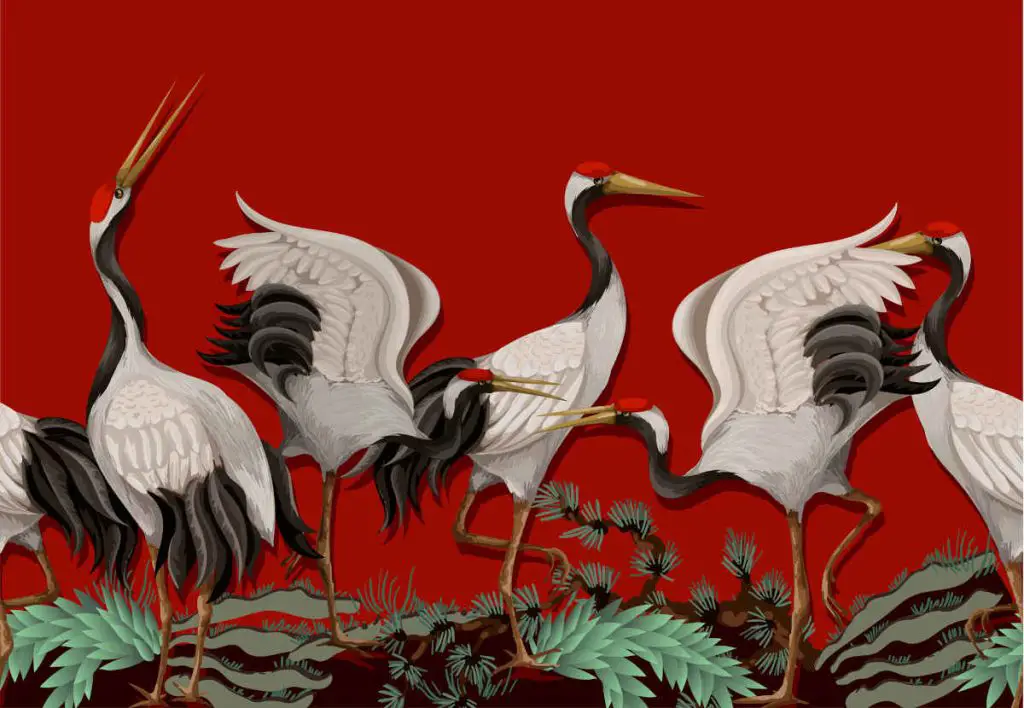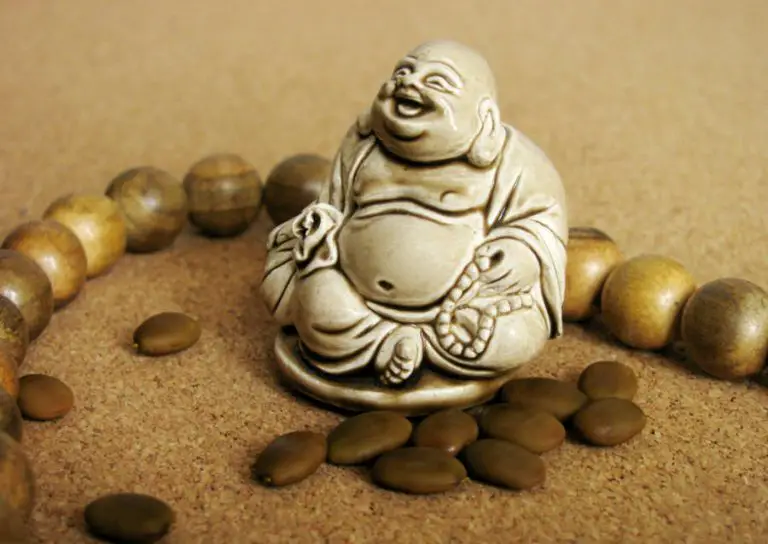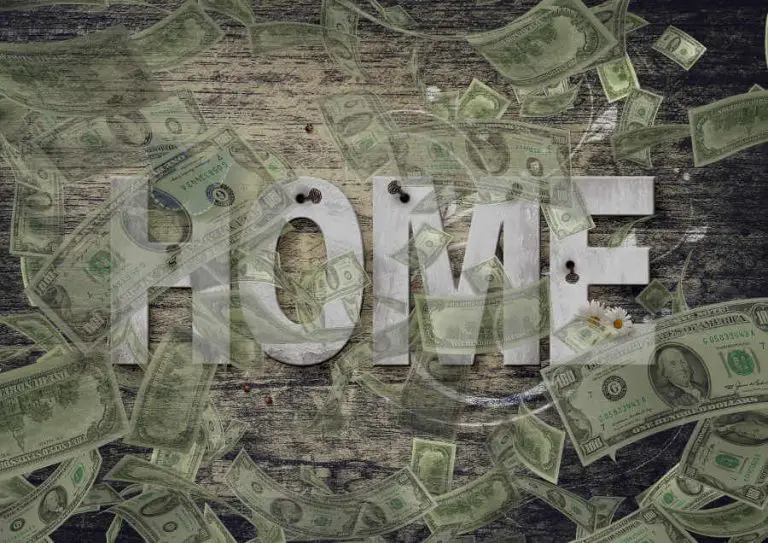In Chinese culture and Feng Shui, birds are regarded as auspicious, fortune-bringing symbols. The crane, or hè (鹤) in Chinese, is renowned as the prince of all feathered creatures. The crane is the most popular bird symbol (second to the phoenix, or Fenghuang), representing longevity and harmony.
In China, there is a long-standing tradition linking cranes to ideas about immortality. With the advent of Daoism in the Han dynasty, these long-lived birds were particularly connected with wisdom, immortality, and longevity.
In Chinese, the crane is also a homophone for the word “harmony” (合), hence two cranes represent the best wishes for a long and happy marriage. Due to the crane’s status as “a bird of the first rank” in the imperial hierarchy, it also stands for great prestige. Additionally, the traditional form of the character for flight is (飛), which may symbolize a crane in flight with two ‘wings’ and a long neck. The modern character for flight (飞) only has one wing.
The crane is also known as “three-long” because of its long beak, long legs, and long neck. Standing upright, it is one meter high. Due to the crane’s admiration for its unwavering strength in flight, its wings were employed as an amulet against fatigue and depletion.
This article will examine the numerous symbolic meanings associated with cranes in Chinese culture, ranging from their employment in Feng Shui to mythology and folklore. We will learn along the way how cranes have come to represent the virtues of longevity, fortune, serenity, wisdom, and more.
The Symbolism of Cranes in Chinese Culture
Cranes have fascinated people for hundreds of years because of how beautiful they look and how calm they seem. But cranes’ symbolic meaning extends far beyond their outward appearance.
Symbol of social ranking
The court robes of the Ming and Qing dynasties featured cranes in the mandarin square. The first-class civil official in the Ming dynasty would dress in a buzi with a fairy crane (仙鹤 – xiānhè). When the crane mandarin square is coupled with water, cloud, and blue sky design, it highlights the intelligence and skill of the civil servants of the Chinese Imperial court.
Symbol of Longevity and Immortality
Due to the bird’s frequent association in mythology with immortal gods, cranes ( 鹤hè) are known as “immortal cranes” (仙鹤) and are said to provide longevity. Numerous myths and folktales feature gods from heaven flying to earth on a crane. The crane is revered as a messenger from heaven in Daoist tradition. When a Daoist priest dies, it is said that an immortal crane will carry him to heaven.
A painting of a crane and pine trees is a typical gift for old people because of the saying “pine and crane prolonging life” (sōnghè yánnián 松鹤延年 ).

Nobility and Integrity Symbol
In addition to representing longevity, the crane depicted among the clouds is viewed as a representation of nobility and integrity. People in the past commonly compared virtuous and gifted people to cranes.
Symbol of Confucian relationships
The five birds—a crane, a phoenix, a mandarin duck, a heron, and a wagtail—represent the five Confucian relationships (五伦); the crane here represents the highest level of reverence a son ought to show his father.
Funeral Symbol
A Taoist priest is believed to be “turning into a feathered crane” as he passes away. To symbolize the soul’s ascent to Western Heaven (paradise), which was carried by a crane, a representation of a crane with spread wings was occasionally placed in a funeral procession.
The “boy of the white crane” is a divine messenger who aids heroes in mythology, while cranes are shown standing next to the mother goddess of Chinese mythology, Nüwa, in a painting from the Western Han dynasty.
A symbol of prosperity and good fortune
Cranes are also considered luck and wealth symbols. The sight of two cranes flying together is symbolic of ambition and is thought to bring fortune and riches, while the sound of a crane’s call is thought to portend success and wealth.
Symbol of Long-Lasting Love
A pair of cranes is a typical symbol of the relationship between a husband and wife. Therefore, it is a romantic bird as well, and it represents enduring love and faithfulness in marriage. Cranes, unlike other birds, are monogamous and remain faithful to a single mate until death.
Symbol of Harmony and Peace
Due to their gentle and elegant nature, cranes are also viewed as symbols of peace and harmony. Cranes are frequently shown in Chinese art standing in a mountain stream or surrounded by cherry blossoms to symbolize a peaceful existence. The presence of a crane was frequently invoked to end disputes and bring the world back into equilibrium since it was thought to provide serenity and tranquility to people who saw it.
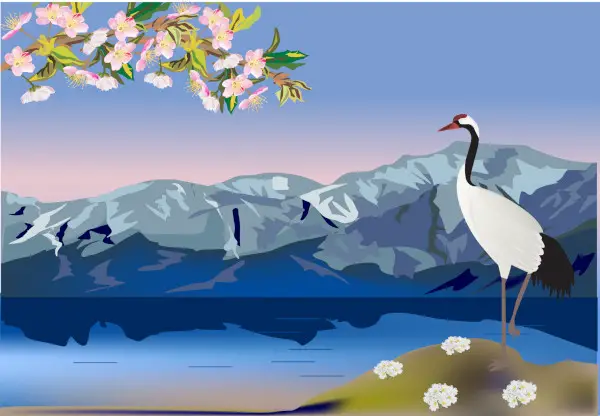
Symbol of Wisdom and Intelligence
Another meaning associated with cranes is wisdom and intelligence. Cranes are known for being able to follow complicated migration routes, which has given them a lot of respect and admiration among the Chinese people. The presence of a crane was considered to inspire and direct people in need, while the sight of one was thought to bestow insight and clarity on those who witnessed it.
Symbol of Purity and Cleanliness
Since cranes soar high above the dust of the earth, the bird has come to represent purity and cleanliness.
Furthermore, dreaming of a crane in any context is a good omen, suggesting that you will live to a full old age, and dreaming of a flying crane is an even better omen, suggesting that you will rise to positions of authority.
Chinese festivals and customs also frequently feature cranes, especially around the Lunar New Year. For instance, crane cutouts made of red paper are frequently placed in homes and businesses as a sign of luck and success, and crane pictures can be found on greeting cards and other presents intended for friends and family members to wish them well.
It is also traditional in China to honor an elderly person’s birthday with a picture of a crane, which represents health and longevity.
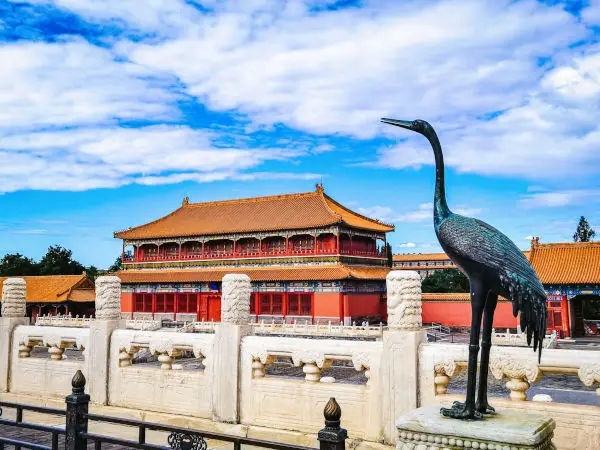
Chinese Legends About Cranes
According to some Chinese myths, there are four different types of cranes, each with a unique color: white, yellow, blue, and black. The black crane is thought to have lived for hundreds of years. According to Chinese folklore, at the age of 1000, a crane turns gray, and after another 1000 years, the crane turns black, thus earning the title of “the mysterious crane.” A black crane is said to stop eating and simply drink water when it reaches the age of 600.
The Legend of the Dancing Cranes
The Legend of the Dancing Cranes is one of the most well-known crane stories in Chinese mythology. According to this tale, a group of cranes spent their days dancing and singing in the sun as they lived in a stunning mountain valley. A young prince happened to be wandering through the valley one day and was so enchanted by the beauty of the cranes that he stayed to watch them dance.
As time went on, the prince grew to care about the cranes, and he made a promise to keep them safe. But one day, a terrible evil appeared in the valley, posing a threat to the cranes and everything they valued. Therefore, the prince joined the cranes to combat evil, and together they destroyed their enemy and saved their home.
Legend of Tseng sang
A Chinese tale says that Tseng sang, a follower of Confucius, saved the life of an injured crane. The crane flew away, but later came back to Tseng sang with its mate. Both birds had a pearl in their mouths, which they gave to Tseng sang.
Chang’e legend
The Love Story of Chang’e is another story that includes cranes. According to this legend, the lovely goddess Chang’e and her husband Houyi the Archer lived on the moon.
One day, a malicious demon who wanted to claim Chang’e approached her while Houyi was away taking part in a significant battle.
Chang’e was terrified when the demon tried to get close to her, so she fled away from the moon to get away from him. However, as she soared through the air, she changed into a white crane and ascended ever higher until she at last landed on a distant mountaintop. She spent the remainder of her days there as a bird, free of the demon’s control but apart from her devoted husband.
Legend of Lü Dongbin
One of the Eight Immortals, Lü Dongbin, is said to have drunk wine one day, and instead of paying, he painted two dancing cranes on the inn’s wall. The wall painting gained popularity and drew in more customers, but when the loan was paid, the cranes flew off the wall.
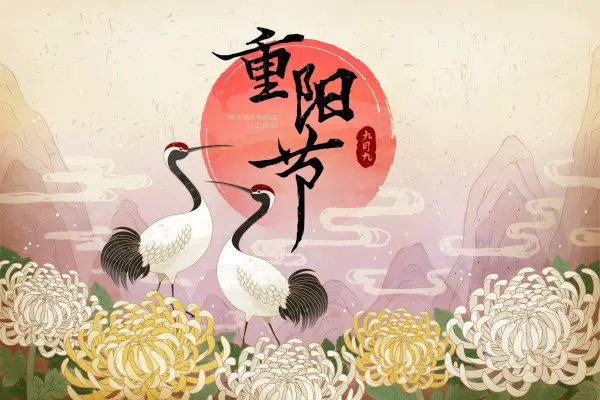
Popular Crane Sayings
The top 10 crane sayings, along with their definitions, are shown below. If you’re curious, the characters for these idioms in Chinese are in parenthesis.
- “Floating clouds, wild cranes” (xián yún yě hè – 闲云野鹤): The saying refers to those who live a life of independence and are untethered to mundane concerns.
- “Like a white crane in the clouds” (yn zhng zhōng xiān hè – 云中仙鹤): This characterizes a noble and virtuous person.
- “Like a crane standing in a flock of chickens” (hè lì jī qún – 鹤立鸡群 ): An idiom used to describe someone who stands out from the crowd due to either their physical appearance or a particular skill.
- “Longevity like the turtle and crane” (guī nián hè shòu – 龟年鹤寿): This saying refers to a lengthy life.
- “Burning the zither for firewood and boiling the crane for food” (fén qín zhǔ hè – 焚琴煮鹤): This idiom denotes spoiling or destroying lovely things.
- “The fleeing people heard the sound of the wind and cranes and thought there were chasers” (fēng shēng hè lì – 风声鹤唳): This phrase is used to describe those who are experiencing extreme anxiety and paranoia.
- “Ride a crane to the west” (jiàhè xīqù – 驾鹤西去 ): This is a euphemistic term for someone’s death.
- “The frame of a crane and the posture of a pine” (hè gǔ sōng zī – 鹤骨松姿): This saying denotes a person’s refined and remarkable behavior.
- “Have gray hair like a crane and a child’s face” (hè fà tóng yán – 鹤发童颜 ): A Chinese saying that describes a good-looking older person.
- “The immortal flew away on his yellow crane and never returned” (yǎo rú huáng hè – 杳如黄鹤): This saying indicates a person who cannot be located or whose whereabouts are unknown.
Related reading: Bats as Symbol in Chinese Culture and Feng Shui – Opens in new tab
Cranes in Chinese Art
The Chinese have always been especially creative when it comes to representing abstract ideas using different living, non-living, and fictitious items. Such a system was founded on the idea that all natural events and objects on Earth represented Heaven’s intention for how people should behave. Therefore, auspicious occurrences were recorded in writing or represented visually in China with the belief that doing so would replicate their beneficial effects.
One of the most common ways that cranes are shown on Chinese rugs is as a red-crested crane flying among clouds and roses. This shows longevity, knowledge, and nobility.
Another common representation is a crane standing next to a pine tree, a stone, a tortoise, or a deer. The tortoise, like the crane, is one of the Chinese cultural symbols of longevity. So, the combination of a tortoise and a crane is associated with longevity, according to Chinese beliefs.
Because of their associations with immortals, the combination of a crane and peach is one of the Chinese symbols of longevity. In Chinese mythology, they are both representations of longevity.
Immortals are often shown riding on cranes, and mythical peaches are said to grow in the garden of Xiwangmu. The mix of peaches and immortals brings to mind penglai, which is an island for immortals.
Additionally, in many pieces of literature, art, and film, the crane symbolizes hope. It has evolved into a potent emblem of conquering adversity and finding resilience in challenging times. The crane’s capacity to soar high into the sky serves as a metaphor for overcoming difficulties in accomplishing one’s goals and objectives.
🍀 Our “Feng Shui Master” app is your trusted companion, offering a useful guide to implementing Feng Shui principles. Try it now!
Twenty cranes emerge in flight over the Golden Gate of the Imperial Palace in the painting “Auspicious Cranes” (瑞鹤图) by Song dynasty Emperor Huizong (1082-1135), as though sent by Heaven to approve and commemorate one of Huizong’s most brilliant days. This is due to the fact that he was about to complete his twelfth year as ruler. Twelve years are regarded as the end of the earthly cycle in Chinese culture. An emperor who reigned for twelve years was thought to be capable of achieving greater glory.
Huizong depicted this picture on silk because he believed it to be an omen of good fortune. However, the majority of the flower-and-bird paintings showed private scenes, like lovely courtyards. Emperor Huizong adopted a new stance by focusing on the expansive sky. His design was really bold. While the clear sky with soaring cranes takes up more than two-thirds of the painting, the bottom one third of the work depicts the upper portion of the palace gate surrounded by clouds that also symbolize auspiciousness. (Photo- China Online Museum)
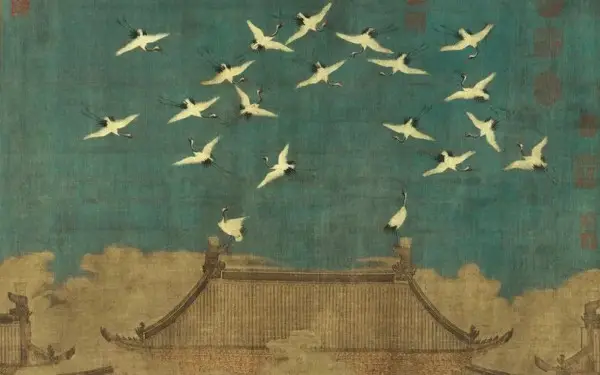
Cranes in Feng Shui
In Feng Shui, cranes have always been seen as symbols of luck and wealth. As a result, they are frequently used in interior design to create a sense of calm and wellbeing, draw in good energy, and attract positive energy. They are supposed to provide a feeling of calmness in any setting with their long, thin legs and dignified posture, which represent stability and power.
Furthermore, it’s thought that those who welcome cranes into their homes will receive the blessings of longevity, prosperity, and wisdom.
Because they are thought to represent the yin and yang of life—the balance between light and dark, positive and negative—cranes are frequently displayed in pairs in Feng Shui. By putting a pair of cranes in your house or business, you may use the influence of this ancient symbol to create a peaceful, auspicious environment that is full of luck and wealth.
In Chinese mythology, cranes come in four different colors: white, black, blue, and yellow, as we’ve already discussed. Although it is said that black cranes live the longest, many homes choose white because it simply looks better. However, that does not minimize the impact of those in other colors.
But the setting and the way the swan is standing are more important than the color. Cranes have been found to adopt a number of diverse postures in feng shui, unlike the money frog, which nearly always adopts the same position.
Cranes – Different Pose, Different Meanings
In general, a crane’s presence, regardless of its posture, is closely linked to wealth, joy, peace, and longevity. But let’s look at the meanings of the different poses.
- When shown flying through the sky, it stands for knowledge and long life. Most frequently employed by those trying to advance in their jobs.
- The image of a crane with one leg up and its wings spread wide represents longevity.
- Two cranes moving toward one another, either flying or walking, also represent longevity.
- When displayed alongside a spotted deer beneath a pine tree, it represents a lengthy life.
- Cranes among peony blossoms symbolize longevity and wealth.
- On the lotus flowers, cranes represent purity and longevity.
- When a crane is depicted rising toward the sun, it represents a desire for social advancement.
- A crane depicted standing on a large stone and staring at the sun symbolizes a powerful authority who can see everything.
- When it is depicted flying toward heaven, its spiritual meaning represents a pleasant afterlife. This is because, according to legend, it serves as an escort for spirits on their journey to heaven.
- Being a lovely bird with graceful flight, it frequently accompanies presents and gifts to people boarding an airplane… as it denotes a smooth flight.
Want to learn more about Feng Shui? Take a look at these Courses and Books – Aff.link
How to Use the Crane Symbol for Good Feng Shui
Depending on your preferences and the design of your area, there are several ways to incorporate cranes into your home or workplace. Every location has a certain advantage. Here are some tips that you can follow:
- The South is the finest place to maintain the crane since it may lead to numerous opportunities, good fortune, and recognition. Family harmony is ensured by the display of white cranes. The presence of a pair of white cranes in the home represents the continuity of the family and the union of the patriarch and matriarch.
- The father of the family benefits from placement in the Northwest, whereas the children of the family profit from placement in the West.
- Standing cranes with their legs extended (or uplifted) signify a long life. To boost the health of the family members, especially the elderly, place a crane like that in the east area.
- Choose the artwork of a crane flying toward the sun if you want to gain fame and a good reputation. This will increase the total effect and make it easier for you to succeed in both your personal and professional life.
- In order to convey a positive message, cranes are frequently combined with a certain flower. For instance, if it is accompanied by a peony flower, it denotes wealth and longevity.
- As we mentioned, if the painting depicts a pine tree or bamboo and deer, it represents a lengthy life. In order to wish the elderly a long life, you may give them this design.
- You may hang crane-themed paintings above your front door. By doing this, you encourage good vibes to enter your house.
- Keep it out of the bathroom, storage, and kitchen.
- Avoid keeping birds in cages as well. Because that will symbolize confinement and the stunting of growth, it is bad feng shui.
End Words
Finally, cranes have a special place in Chinese culture because of their significance, which goes beyond their beauty and elegance. They are connected with longevity, immortality, nobility, integrity, harmony, peace, wisdom, and intellect, as well as wealth, good fortune, long-lasting love, purity, and cleanliness.
Furthermore, cranes have long been considered auspicious symbols in Feng Shui. The bird’s dignified stance and long, slender legs are thought to reflect stability and power, bringing a sense of peace and wellness to any environment. Feng Shui practitioners believe that adding cranes to their homes or offices attracts beneficial energy, longevity, wealth, and wisdom.
Overall, the symbolism of the crane has been passed down from generation to generation, and it continues to inspire and enchant people today.
Related reading: The Peacock: A Symbol of Royalty and Good Fortune in Chinese Culture – Opens in new tab
Stay in Touch
 Join our newsletter by using the forms on this website or click here!
Join our newsletter by using the forms on this website or click here! Follow us on Google News
Follow us on Google News Follow us on Facebook
Follow us on Facebook
Feature Image from Depositphotos

